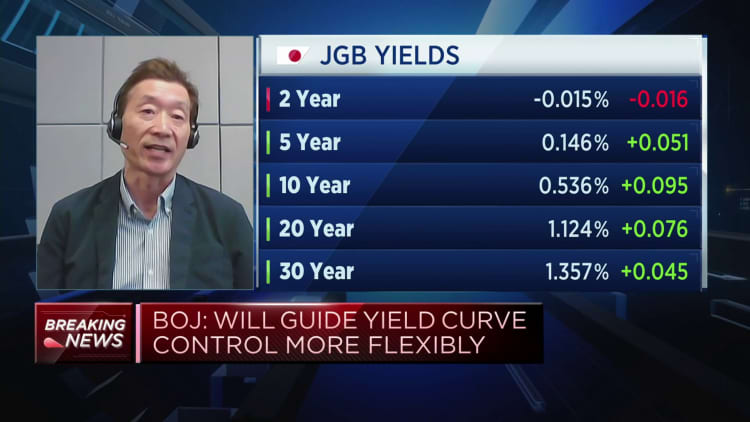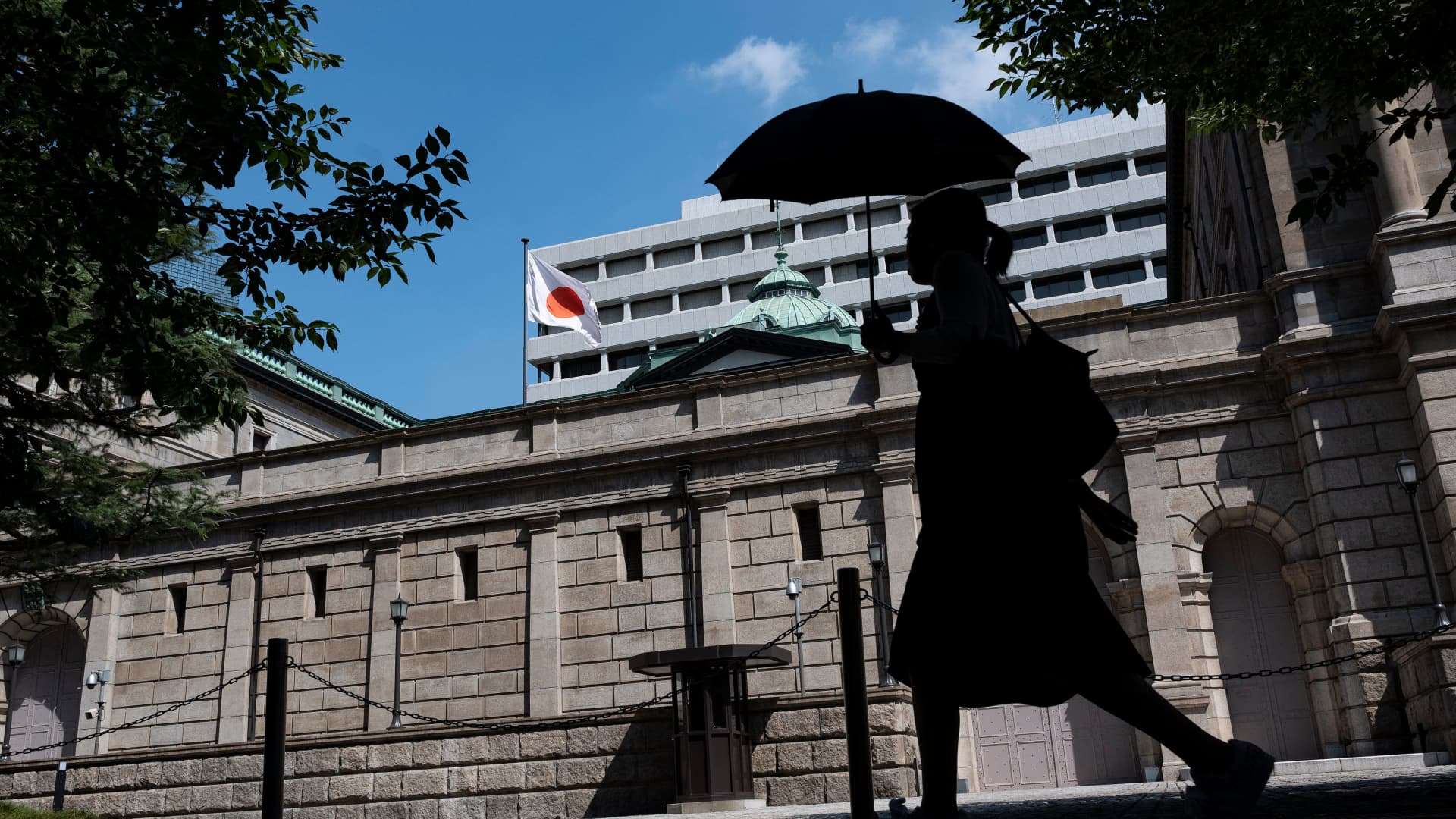A pedestrian walks past the Bank of Japan (BoJ) building in central Tokyo on July 28, 2023.
Richard A. Brooks | Afp | Getty Images
The Bank of Japan debated growing prospects of sustained inflation at their July meeting with one board member saying wages and prices could keep rising at a pace “not seen in the past,” according to a summary of opinions released on Monday.
While the members stressed the need to keep ultra-easy monetary policy, the upbeat view on the inflation outlook suggests they are now more convinced that conditions for phasing out stimulus could fall in place.
related investing news


“More firms have started to consider wage hikes for next fiscal year and beyond. Japan is expected to see a new phase where wages and services prices continue to increase,” according to one opinion shown in the summary.
“The recent wage hikes and pass-through of cost increases by firms have a pent-up aspect, in that these moves had been suppressed for nearly three decades. Therefore, wages and selling prices could continue to rise at a pace that has not been seen in the past,” another opinion showed.
At the July meeting, the BOJ kept its yield curve control, or YCC, targets unchanged but took steps to allow long-term interest rates to rise more freely in line with increasing inflation and economic growth.
Governor Kazuo Ueda said the decision was a pre-emptive move against the risk of rising inflation pushing up long-term bond yields, and heightening volatility in financial markets.

With high uncertainty over the outlook, as well as both “upside and downside risks” to inflation, it was appropriate to make YCC flexible at this stage, several members said, according to the summary.
“If prices and inflation expectations continue to heighten, the effects of monetary easing will strengthen. On the other hand, strictly capping the 10-year bond yield at 0.5% could affect bond market function and market volatility,” one opinion showed.
While some saw the need to make YCC more flexible as a preventive measure against future risks, one member said sustained achievement of 2% inflation was already in sight.
“Achievement of 2% inflation in a sustainable and stable manner seems to have clearly come in sight. In order to continue with monetary easing smoothly until an exit, the Bank should allow greater flexibility in its conduct of yield curve control,” the member was quoted as saying.
Under YCC, the BOJ guides short-term interest rates at -0.1% and the 10-year bond yield around 0% as part of efforts to prop up growth and sustainably achieve its 2% inflation target.
It also sets an allowance band of 50 basis point around the 10-year yield target. The BOJ nominally kept the band unchanged last month but said it would now allow the 10-year yield to rise to as much as 1.0%.
Japan’s core consumer inflation stayed above the central bank’s 2% target in June for the 15th straight month, as firms kept passing on higher import costs to households.
The BOJ has said it needs to maintain ultra-low rates until robust domestic demand and higher wages replace cost-push factors as key drivers of price gains, and keep inflation sustainably around its target.

